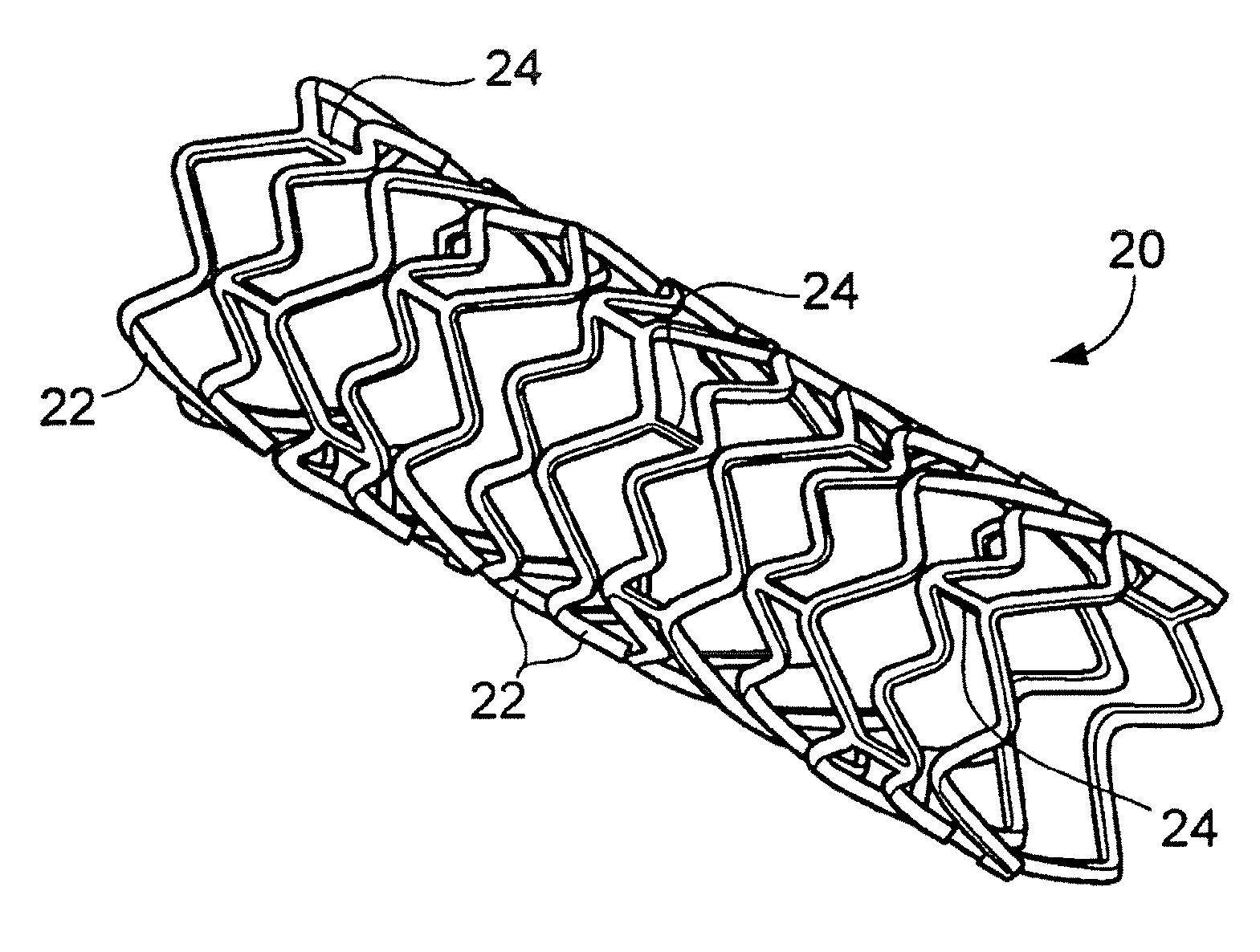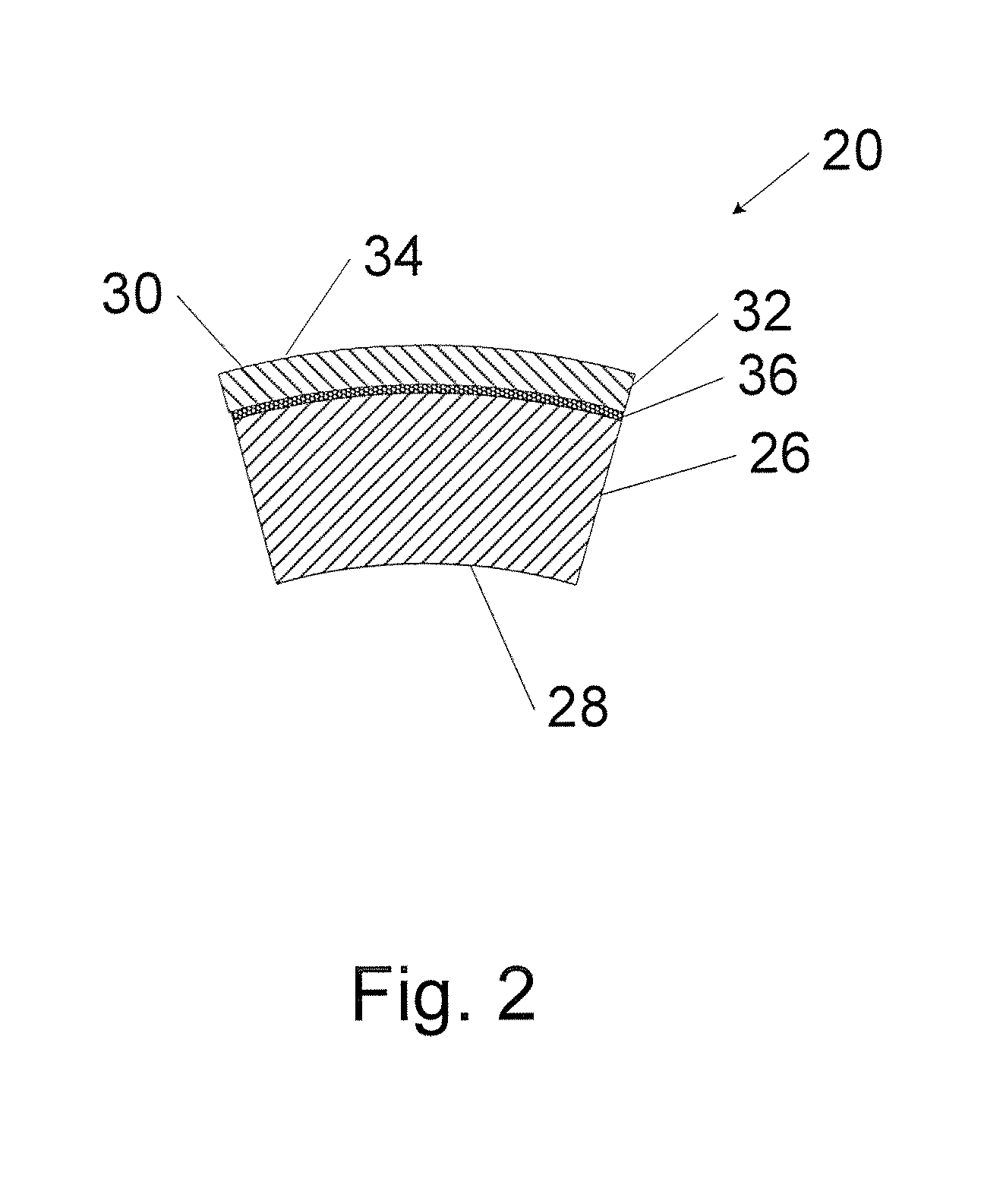Stents with ceramic drug reservoir layer and methods of making and using the same
a technology of ceramic stents and drug reservoirs, which is applied in the field of stents, can solve the problems of general undesirable detachment of drug reservoir layers from the stent body, and achieve the effect of reducing the risk of fractur
- Summary
- Abstract
- Description
- Claims
- Application Information
AI Technical Summary
Problems solved by technology
Method used
Image
Examples
Embodiment Construction
I. Overview
[0014]This disclosure relates to making stents having ceramic reservoir surface layers formed on stent bodies.
[0015]Stents are typically implanted intraluminally in tubular body organs, such as blood vessels, to expand or strengthen the portion of the organ where the stent is placed. Drug eluting stents typically have surface portions capable of storing drugs and releasing the drugs at particular rates. Porous ceramic drug reservoir layers coating stent bodies are desirable in many applications because of the biocompatibility exhibited by many ceramic materials. It is desirable to have ceramic drug reservoir layers that are sufficiently thick (e.g., on the order of a few micrometers or thicker) to achieve useful drug storage capacities. In some applications, it is also desirable to have substantially polymer-free ceramic drug reservoir layers.
[0016]There are a number of difficulties in making stents with ceramic drug reservoir layers. First, it is often difficult to achie...
PUM
| Property | Measurement | Unit |
|---|---|---|
| Percent by volume | aaaaa | aaaaa |
| Porosity | aaaaa | aaaaa |
| Porosity | aaaaa | aaaaa |
Abstract
Description
Claims
Application Information
 Login to View More
Login to View More - R&D
- Intellectual Property
- Life Sciences
- Materials
- Tech Scout
- Unparalleled Data Quality
- Higher Quality Content
- 60% Fewer Hallucinations
Browse by: Latest US Patents, China's latest patents, Technical Efficacy Thesaurus, Application Domain, Technology Topic, Popular Technical Reports.
© 2025 PatSnap. All rights reserved.Legal|Privacy policy|Modern Slavery Act Transparency Statement|Sitemap|About US| Contact US: help@patsnap.com



